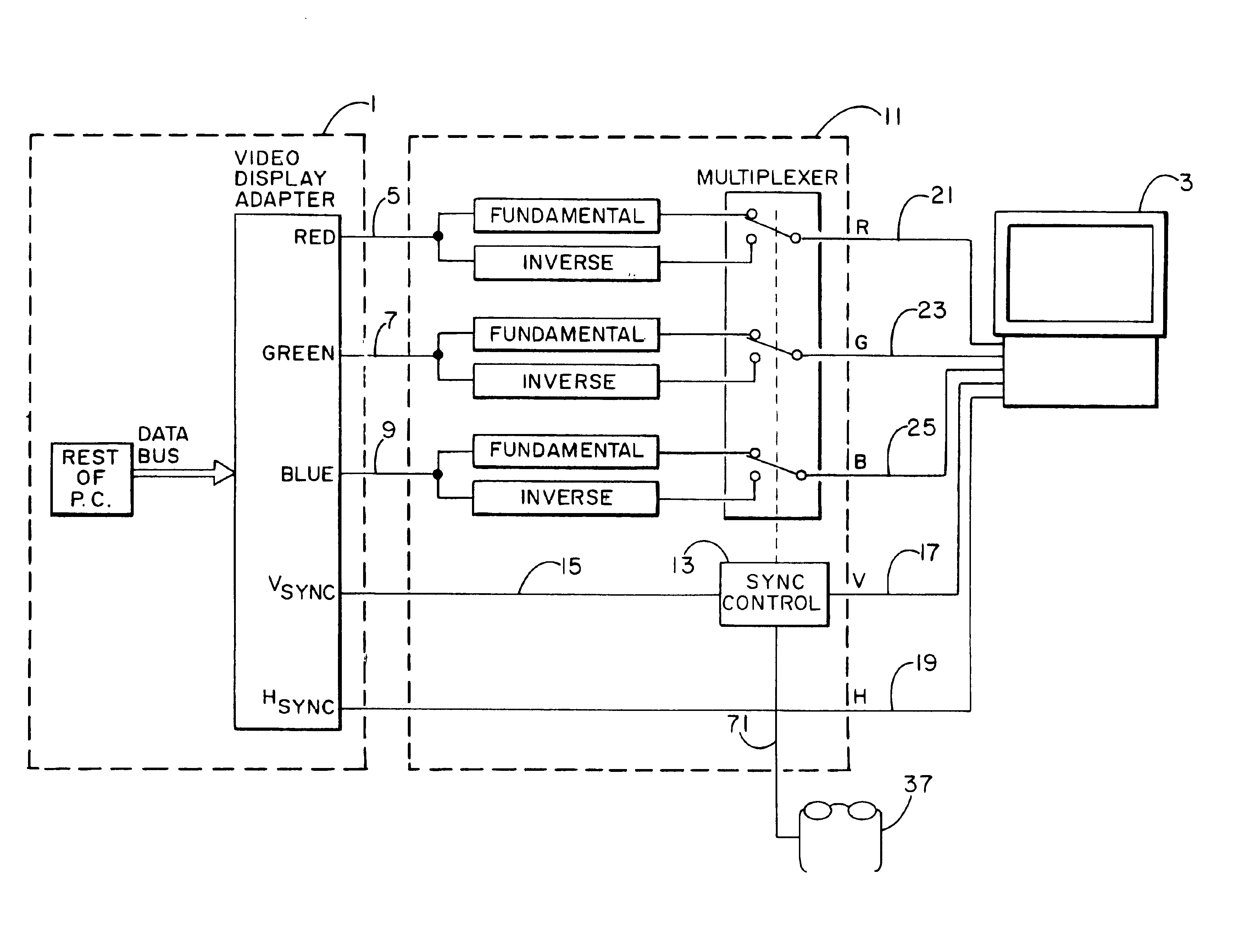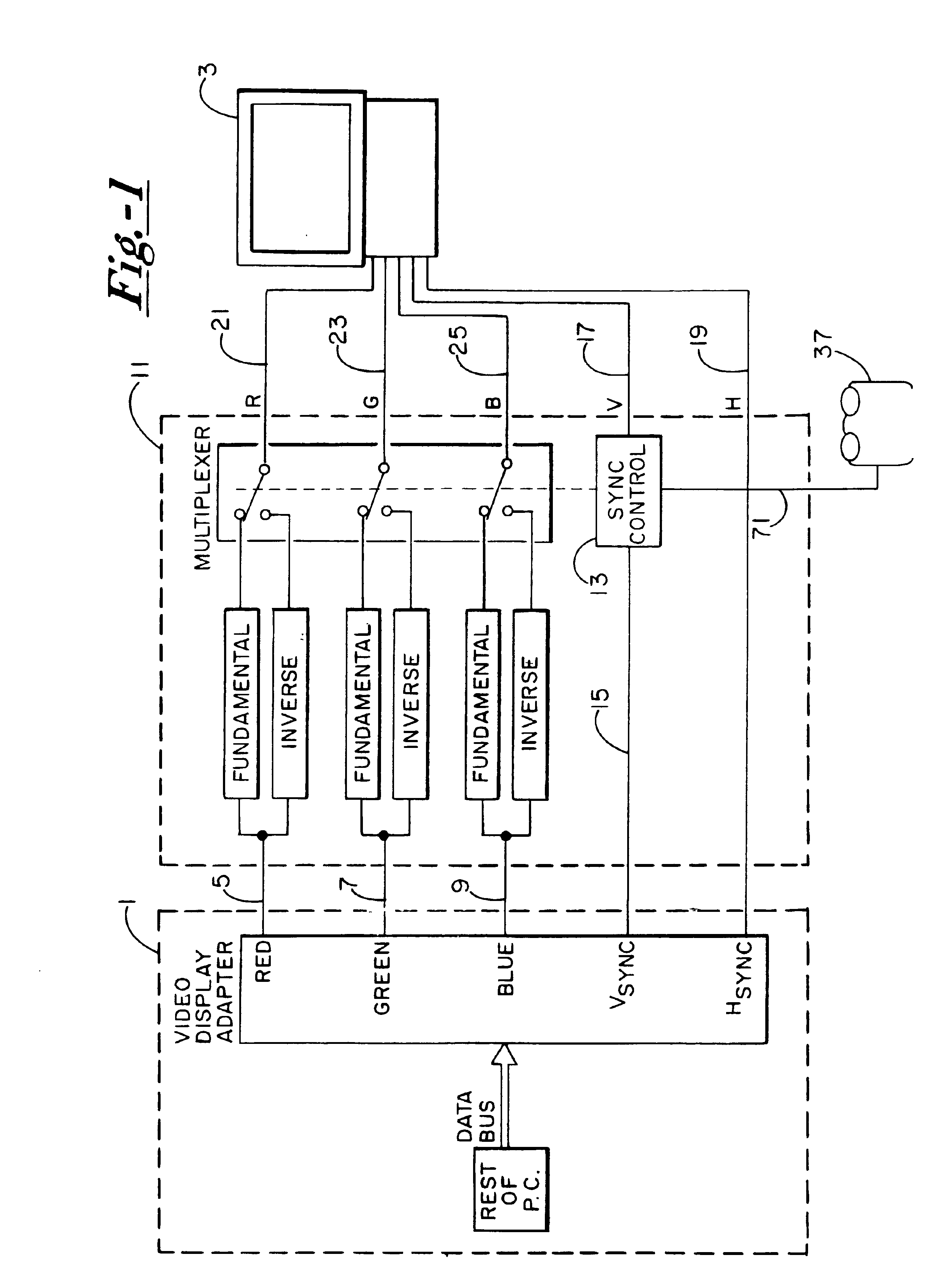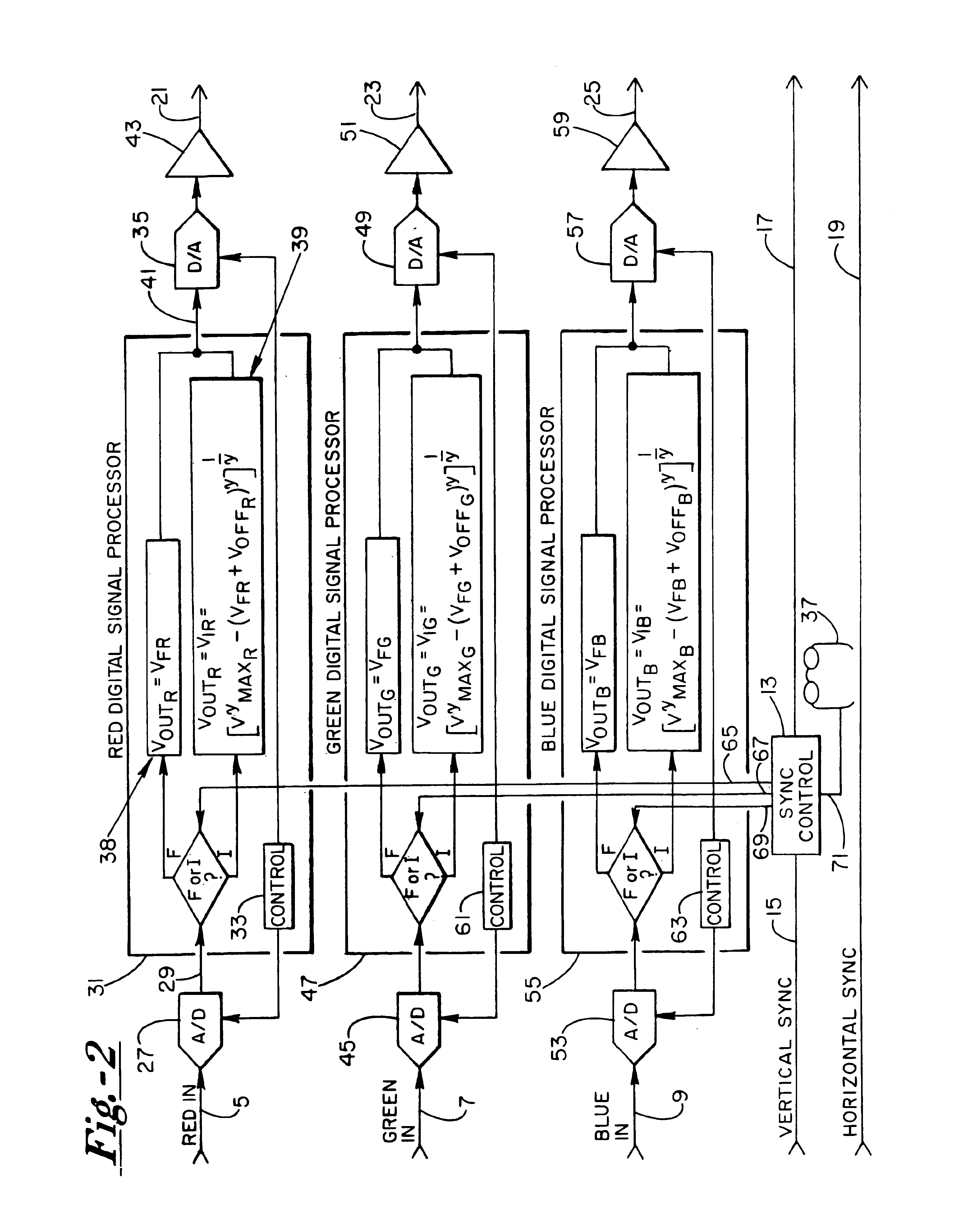Sequential inverse encoding apparatus and method for providing confidential viewing of a fundamental display image
a fundamental display image and inverse encoding technology, applied in the direction of electrical apparatus, selective content distribution, instruments, etc., can solve the problems of inability to prevent viewing, system is hardly secure, screen is not easily converted between confidential and normal viewing modes,
- Summary
- Abstract
- Description
- Claims
- Application Information
AI Technical Summary
Benefits of technology
Problems solved by technology
Method used
Image
Examples
Embodiment Construction
[0042]In order to better describe the invention herein, it is helpful to first explain briefly the concept of “primary color addition” as it pertains to light produced by video displays, and the response of the human eye with respect to the same. Virtually all common video displays, from color television and CRT displays, to LCD screens, plasma displays, etc., generate an image through the additive mixture of three primary colors of light: red; blue; and green. A video display typically has thousands of tiny areas, called pixels, that produce light of a specific color representative of an image at that specific location. Each pixel, in turn, is generally composed of a triad of smaller areas, or sub-pixels, consisting of tiny phosphors, color filters, or the like, which individually produce the primary colors red, blue, and green.
[0043]As one views a color image produced on a video display, the human eye does not detect each red, green, or blue sub-pixel separately. Rather, depending...
PUM
 Login to View More
Login to View More Abstract
Description
Claims
Application Information
 Login to View More
Login to View More - R&D
- Intellectual Property
- Life Sciences
- Materials
- Tech Scout
- Unparalleled Data Quality
- Higher Quality Content
- 60% Fewer Hallucinations
Browse by: Latest US Patents, China's latest patents, Technical Efficacy Thesaurus, Application Domain, Technology Topic, Popular Technical Reports.
© 2025 PatSnap. All rights reserved.Legal|Privacy policy|Modern Slavery Act Transparency Statement|Sitemap|About US| Contact US: help@patsnap.com



